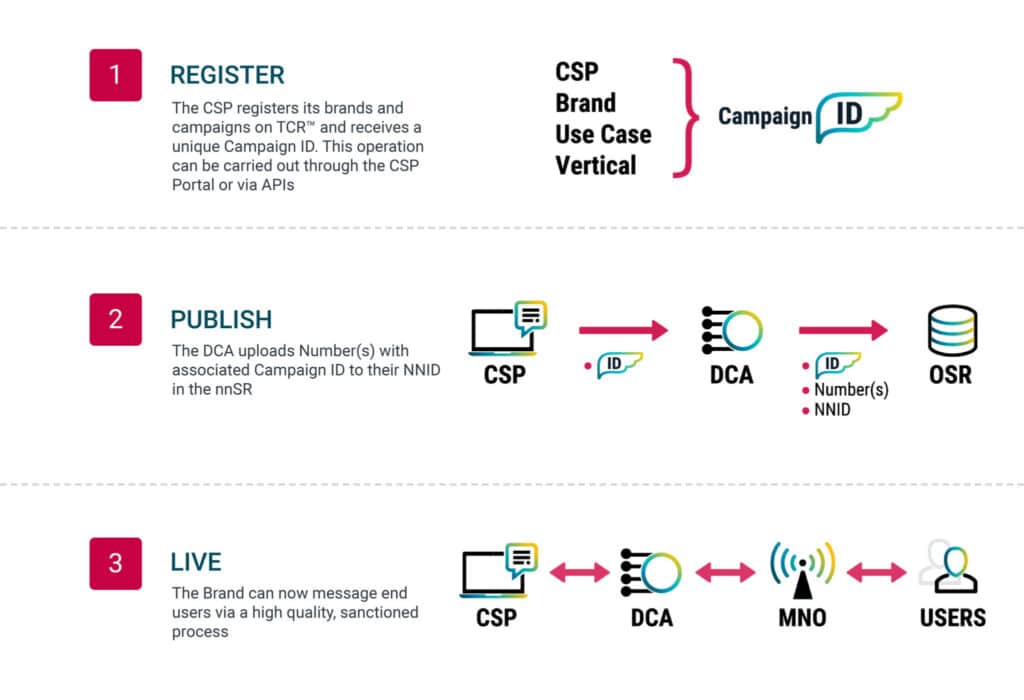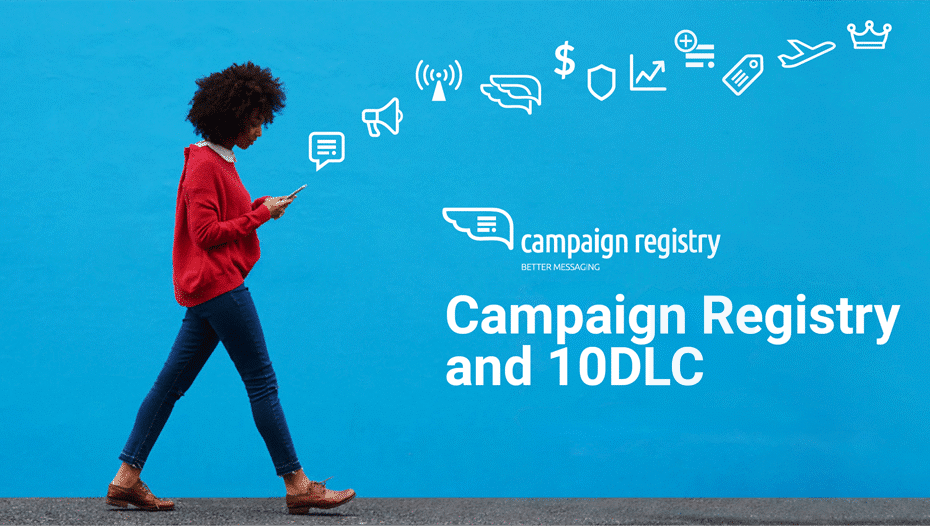📑 Table of Contents
Businesses that rely on A2P messaging should prepare for upcoming fee increases from Verizon and The Campaign Registry (TCR).
Starting June 1, 2025, Verizon will raise its pass-through fee for Toll-Free SMS from $0.003 to $0.004 per message. Though the increase is minor per message, it could significantly impact companies that send large volumes.
Meanwhile, TCR will implement new and increased fees for 10DLC messaging services beginning August 1, 2025. Costs for Brand Registrations, Vetting Services, and Appeals will rise slightly, and a new $12.50 charge for Authentication Plus Verification—previously free—will take effect.
These changes reflect growing operational expenses in the messaging ecosystem. Businesses are advised to adjust their budgets and review communication strategies accordingly.
What is TCR and Why Is It Required?
The Campaign Registry (TCR) is a third-party organization that oversees the registration process for A2P (Application-to-Person) messaging via 10DLC (10-digit long code) in the United States. It ensures that brands and messaging campaigns are verified and compliant before messages reach consumers.
TCR is essential for businesses using 10DLC numbers to send SMS because it allows mobile carriers to distinguish legitimate traffic from spam. By registering a brand and its campaigns through TCR, companies prove that they are following best practices and regulatory guidelines.
This process not only keeps the messaging ecosystem secure but also benefits businesses by increasing deliverability rates, reducing the chances of message filtering, and enhancing brand reputation. Simply put, using TCR helps your messages reach more people—faster and more reliably.
Overview of the 2025 Cost Increase
In 2025, businesses can expect a noticeable rise in TCR-related registration and campaign fees. These cost increases affect several key areas:
- Brand registration fees: The one-time or annual costs for registering your business entity are expected to rise.
- Campaign fees: The cost to register individual campaigns—whether for marketing, alerts, or customer service—is increasing.
- Monthly campaign maintenance charges: These are recurring charges to keep a campaign active and compliant.
While the exact amounts may vary based on carriers and use cases, some platforms have reported a 10–20% increase across multiple fee categories compared to 2023–2024 rates. For example, a campaign that previously cost $10/month to maintain may now cost $12 or more, depending on its classification.
This upward trend is consistent with previous years, signaling that TCR compliance is becoming a more costly but necessary part of SMS marketing.
Why Are TCR Fees Going Up?
There are several factors driving the increase in TCR costs:
- Stricter compliance requirements: As regulators and carriers crack down on spam and fraud, the infrastructure needed to manage and monitor campaigns has become more complex—and more expensive.
- Carrier involvement: Mobile carriers (like AT&T, T-Mobile) charge pass-through fees on top of TCR costs, and many of these have been raised for 2025.
- Technology upgrades: The TCR system continues to evolve with better fraud detection, real-time reporting, and security protocols, which come at a price.
- Market demand: With more businesses entering the SMS space, the demand for secure, verifiable messaging has increased, pushing platforms to scale up operations.
These combined forces are making compliance more expensive, but also more essential for maintaining message quality and trust.
Impact on Businesses
The rising costs will be felt differently across the business spectrum:
- Small and medium businesses (SMBs) may struggle with the added expense, especially if they operate multiple campaigns or have limited SMS budgets.
- High-volume senders, like eCommerce platforms or marketing agencies, could see hundreds—or even thousands—of dollars added to their yearly SMS costs.
- Some businesses may be forced to rethink their SMS strategy, consolidating campaigns, reducing message frequency, or turning to alternative communication methods to manage costs.
In short, the cost hike adds a layer of financial pressure that could lead to greater scrutiny of SMS ROI.
How to Prepare for the Cost Increase
Here’s how businesses can stay ahead:
- Review and audit current campaigns: Remove outdated or underperforming campaigns to cut costs.
- Consolidate where possible: Group similar messaging under a single campaign to reduce the number of registrations.
- Forecast your SMS budget: Plan for 10–20% higher costs in 2025 to avoid surprises.
- Talk to your SMS provider: Many platforms offer bundled packages or cost-saving recommendations based on your use case.
By being proactive, you can still get strong results from SMS marketing without letting costs spiral.

Alternative Messaging Options
If TCR costs feel too high, consider exploring other channels:
- MMS messaging: Still under TCR but can provide more value per message with rich content (images, videos).
- Toll-free SMS: Sometimes a cheaper and more flexible alternative to 10DLC, though with some limitations.
- Short codes: More expensive upfront but ideal for high-volume campaigns with immediate brand recognition.
- Email and push notifications: Cost-effective and great for longer messages, though engagement rates vary.
- WhatsApp Business: A growing option for customer communication—especially outside the U.S.—with low-cost messaging and wide reach.
Each alternative has its pros and cons, but diversification can help reduce reliance on any one platform—especially one with rising costs.
Final Thoughts
As SMS marketing continues to evolve, staying compliant through The Campaign Registry (TCR) is no longer optional—it’s essential. While the cost increases in 2025 may feel like a setback, they reflect the industry’s shift toward safer, more reliable messaging.
Businesses must now factor these higher fees into their budgets, streamline their SMS strategies, and explore new ways to maintain engagement without overspending. Whether you’re a small brand or a large-scale sender, understanding the why behind these changes can help you adapt more effectively.
Stay informed about compliance rules, review your current campaigns, and speak with your SMS provider about ways to optimize.
